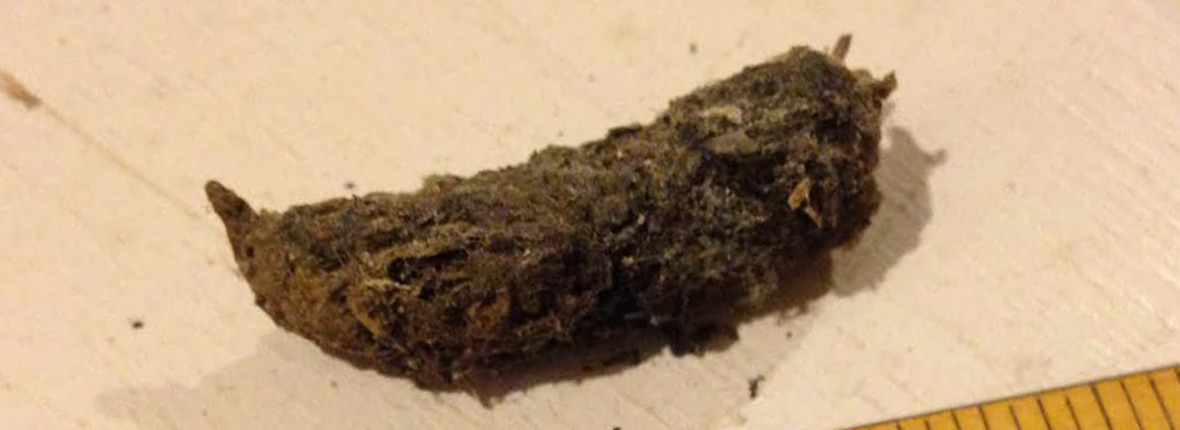Are skunk feces dangerous to touch or breathe?
Skunk feces are known to contain harmful microbes, including viruses and bacteria. This is why it can be dangerous to breathe or touch the substances that contain the fecal materials of the skunk. Dry skunk feces can break into small particles, but there are some particles that are carried by wind and dust that may be inhaled if you are close to the den of skunks.

Skunks are normally recognized by their black and white color combination, and they are able to shoot a foul smelling liquid out of their hind end if they are threatened. Their fecal materials are a source of many infections to animals and humans. A skunk may be a nuisance in different regions in the entire world, and they have the capacity of digging under the deck and porch, so they will end up defecating in these places. The skunk feces may be identified by similar features as feces of cats. They are normally in a tubular shape and they may be found near the nest of the skunk. The feces can also be characterized by a blunt and smooth surface, and they will break up if they are prodded with an object.
Skunk feces have parts of insects that are yet to be digested, and they may contain undigested seeds, grass and berries. There are many dangers that are associated with the skunk feces. They can carry tapeworms, roundworms and they may infect humans and animals if they drink food or water that has been contaminated. The worms lay eggs in the intestines of the skunk and they are then passed out with the feces. If the pets eat their carcass, they ingest the eggs of worms and when these eggs hatch, they will release the parasites in the new hosts.
The diseases that you can contract through touching or breathing in substances from the urine or feces of a sunk include Canine distemper, baylisascaris and listeriosis. Other diseases are hepatitis, equine protozoa and myeloencephalitis. It is good to avoid any contact with the feces of a skunk or to wear protective hand or face gear to cover yourself if you are removing fecal materials of a skunk from a yard, porch or deck.
Listeriosis is a disease that is caused by the bacteria in the skunk feces, and it can be transmitted to pets and humans. The symptoms that are associated with listerosis are fever, rash, fatigue and diarrhea or other neurological symptoms like paralysis and brain swelling.
Canine distemper is another concern. It is transmitted through direct contact with the animal feces. Any discharge from the skunk can cause the disease like feces, urine and nasal discharge. The disease may make the animal experience lethargy, diarrhea and fever.
Hepatitis is a disease that has been associated with the skunk feces, and it may be transmitted to humans or another animal through contact with urine or feces. The disease will result in liver enlargement or damage when it is not controlled.
You may also want to read:
Go back to the Skunk Removal home page or email us for more info about Are skunk feces dangerous to touch or breathe?

